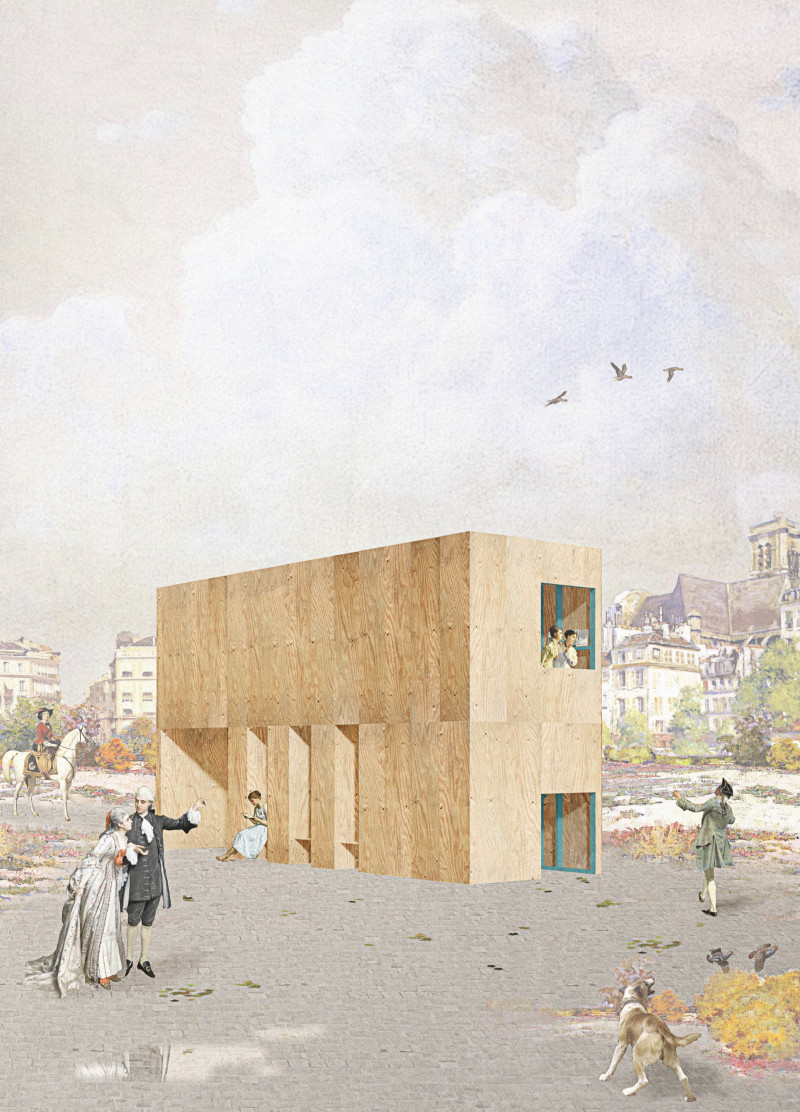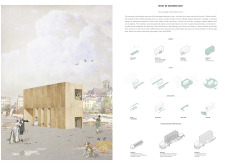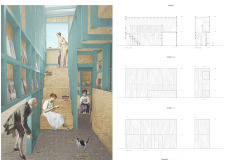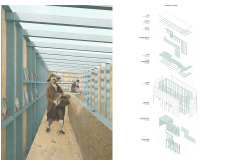5 key facts about this project
The project "What in Wooden Box?" features a portable reading room created to encourage curiosity and interaction within the community. Designed as a multifunctional space, it invites users to explore literature while engaging in a range of social activities. Its wooden facade, with a clean appearance, helps it adapt easily to different surroundings. This design fosters an environment where individual and group activities can coexist, making reading a communal experience.
Design Concept
The design focuses on sparking curiosity, prompting visitors to wonder what lies within. With a neutral exterior, the reading room motivates exploration and engagement, making it an inviting place for users. The intention is to craft an atmosphere that enhances the enjoyment of books and stimulates conversations among visitors.
Functional Organization
Inside the reading room, the layout supports various activities, such as reading, socializing, and attending lectures. Users can park their bikes securely, enjoy a cup of coffee, or chat with friends. Comfortable lounge areas are available, giving individuals space to unwind. This carefully planned organization ensures that the reading room meets the diverse needs of the community while encouraging social interaction.
Architectural Modules
The design includes three specific modules to improve functionality. The Quick Use Module offers a safe outdoor reading experience. The Rest Zone Module provides space for four bicycles, promoting eco-friendly transportation. The Lecture Module serves as a book exchange box, facilitating the sharing of ideas and resources amongst users. These components work together to create an engaging environment for all who visit.
Materials and Construction
A focus on materials supports both appearance and structural soundness. Plywood sheets and wooden beams make up the main framework, providing strength and a welcoming feel. The roof, made of polycarbonate sheets, allows natural light to brighten the interior while keeping out the rain. This combination addresses practical needs and contributes positively to the design's overall quality.
The reading room's wooden facade and thoughtful layout draw the community into a shared space for literature, highlighting the importance of curiosity and social engagement.





















































